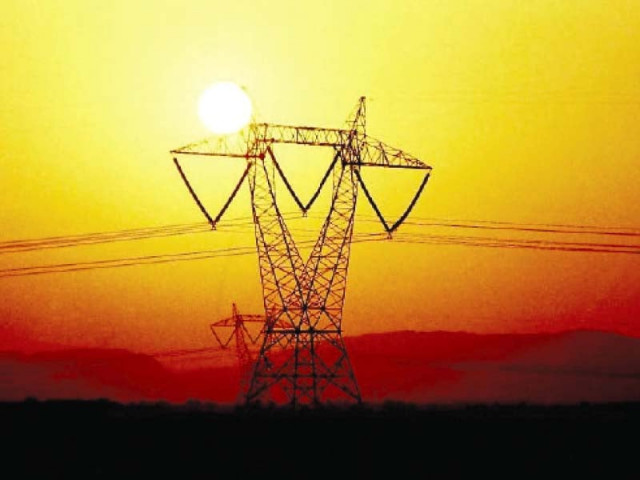Power tariff upped by Rs3 for Oct
NEPRA decides FCA will be charged in Dec bills

The National Electric Power Regulatory Authority (Nepra) on Tuesday raised the power tariff by Rs3.07 per unit on account of fuel charges adjustment (FCA) for the month of October this year just as its inquiry revealed that electricity distribution companies were overcharging their customers – in some cases by up to 100 % -- resulting in inflated bills.
The power regulator in a notification said that the adjustment of Rs3.0786 per kilowatt-hour (kWh) would be applicable to all categories of consumers except electric vehicle charging stations (EVCS) and lifeline ones.
The adjustment shall be shown separately in the bills on the basis of units charged from the consumers in the month of October.
XWDISCOs, distribution companies that were formerly affiliated with the Water and Power Development Authority (Wapda), would reflect the October’s FCA in the bills of December.
Nepra said that according to the information provided by the Central Power Purchasing Agency (CPPA-G), the actual pool fuel cost for the month of October 2023 amounted to Rs11.4277 per unit.
This was against the reference fuel cost component of Rs7.8938 per unit.
The actual fuel charges, as claimed by CPPA-G, for the month of October increased by Rs3.5339/kWh in comparison with the reference charges.
The power regulator observed that the CPPA-G had purchased energy amounting to 22.5 gigawatt-hour (GWh) from Iranian power producer Tavanir in October at a cost of Rs522 million.
However, the contract between CPPA-G and Tavanir for the import of power of up to 104 megawatt (MW) expired on December 31, 2021.
Read also: Power tariff may be jacked up by Rs3.5 per unit
Keeping this in view, the electricity purchased from Tavanir has been allowed strictly on a provisional basis to avoid piling up of the cost and one-time burdening of the consumers in the future.
The CPPA-G in its request claimed a net positive amount of Rs28.324 billion as previous adjustments in the instant monthly FCA.
About the adjustment of Rs25.4 billion for Thar Coal Board-1, the power regulator has revised its fixed capacity charges (FCC) for the period from February 2023 to July 31, 2023.
In connection with the adjustment of Rs3.2 billion for China’s coal based electricity plant in Hub, the CPPA-G informed the regulator that it was on account of power purchase agreement (PPA) factors and pertained to a period from August 2019 to June 2023.
Considering the fact that the adjustments claimed by the CPPA-G are more than four years old, the regulator directed it to bring these adjustments separately before it along with complete workings and a detailed justification.
As per the directions of the authority, the National Transmission and Despatch Company (NTDC), National Power Construction Corporation (NPCC) and CPPA-G have been providing the hourly and monthly generation data and other relevant details for deviation from the Economic Merit Order (EMO) and corresponding financial impact.
However, the power regulator has observed that the requisite information submitted by the CPPA-G along with the monthly FCA data of October 2023 was not as per the required format.
During hearing, the NTDC presented details about the system constraints and justifications for operation of costlier power plants. It also submitted details of the low utilisation of coal power plants to Nepra.
The NTDC reported provisional transmission and distribution (T&T) of 257.763 GWh i.e. 2.491%, based on energy delivered its system during October 2023.
Read: IMF seeks further power tariff hike
The NTDC in addition also reported T&T losses of 23.324 GWh i.e. 2.926% for the Pak Matiari-Lahore Transmission Company’s (PMLTC) high-voltage direct current (HVDC) line.
The NTDC is allowed T&T losses of 2.639% only at 500KV and 220KV network. The PMLTC’s HVDC line is permitted maximum T&T losses of up to 4.3%.
Accordingly, for the month of October, the T&T losses of 281.087 GWh have been verified for the NTDC system only at 500 kV and 220 kV network and PMLTC’s HVDC line.
The Nepra inquiry exposed that that the actual amount charged from users differed from the snapshot of meter-reading available on their bills.
The user were billed beyond the mandated 30-day billing period, causing the “protected” consumers, those using less than 200 kWh per month consistently for six months, were charged the rate of upper slab consumers.
As per the law, meter readings should be taken for less than 30 days or a maximum of 30 days.
However, the Nepra inquiry revealed that 13.76 million users in the domestic category were billed on the basis of readings of more than 30 days in those two months, while 3.2 million were charged a higher slab rate because of the extended billing period.
This placed 840,000 consumers out of the protected category, while the status of more than 52,800 users was converted to non-lifeline. Those using up to 100kW per month were classified as “lifeline”.
(With input from agencies)



















COMMENTS
Comments are moderated and generally will be posted if they are on-topic and not abusive.
For more information, please see our Comments FAQ